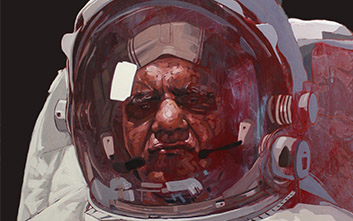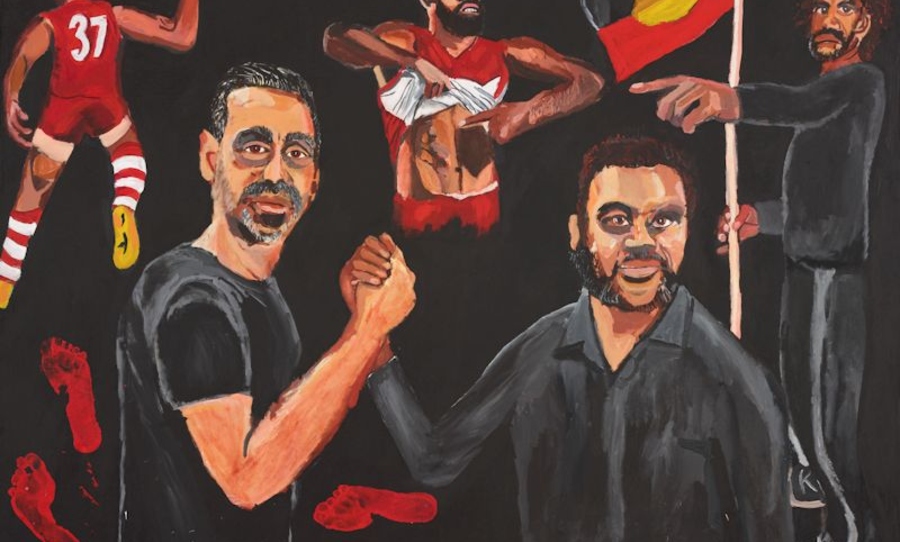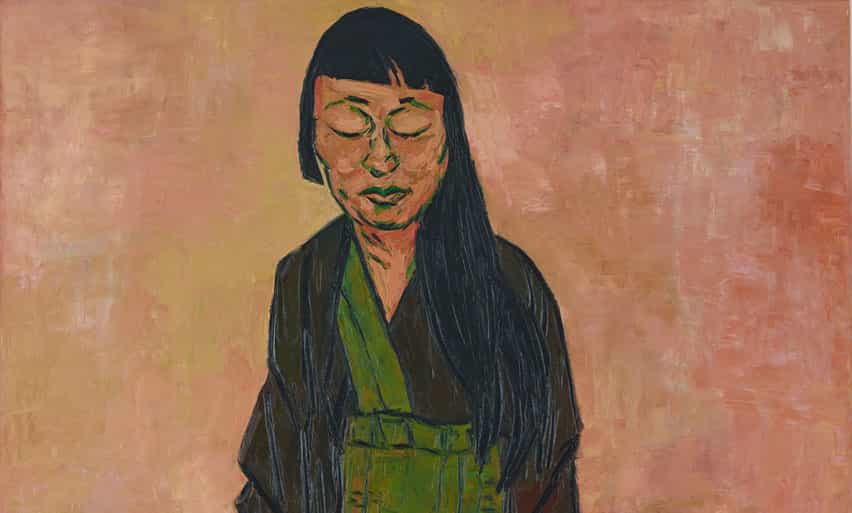When Abdul Abdullah began to encounter racial bigotry regarding his art, he simply took it as artistic fuel and fired it straight back at ‘em.
Nowadays, Abdullah’s work is more multivalent, geared towards reflecting the humanity of Muslim communities while emphasising the ideological brutality of Australia’s far right political parties. We discussed how the artist developed his provocative style, and how his experience of racism feeds into his work.
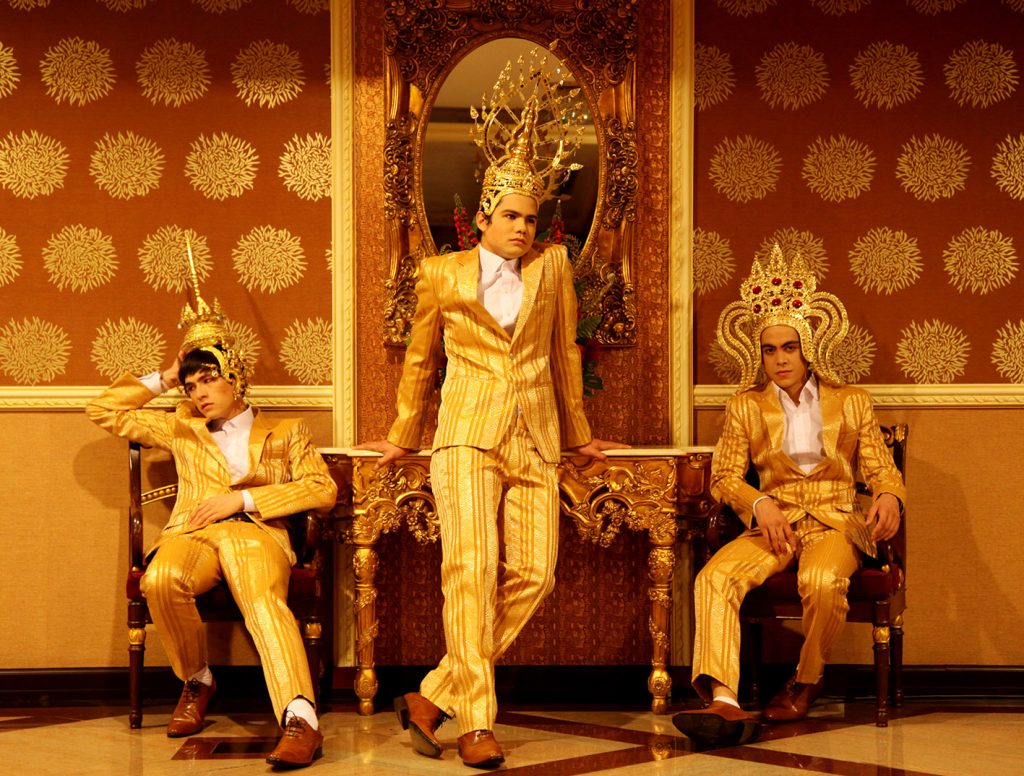
With a dark and insightful edge, photographer and painter Abdul Abdullah brings the lived experiences of the marginalised into the spotlight.
HAPPY: What aspects of being a Muslim Australian do you want to convey through your work?
ABDUL: When I first started talking about this stuff I was really concerned with demonstrating how diverse we were as communities, and how our lived experiences and beliefs were much the same as anyone else. These days I’m like ‘fuck that.’ It’s like pissing into the wind. I’m not going to change anything by appealing to the generosity of bigots. Now I hardly ever look at the religion at all. I look at the experiences of those who happen to be Muslim, and I look at the shit they have to put up with. All I do now is hold a mirror to the prejudice, repackage it, and show it for what it is. I also make my work pretty. I’m cynical.

HAPPY: Is artistic expression a significant part of your culture?
ABDUL: That’s not a question that I can easily answer. Artistic expression is of course a significant expression of who I am and what I think. My culture, aside from a few eccentricities and funny name, is probably pretty much the same as yours.

HAPPY: How did identity and otherness become such central themes in your works?
ABDUL: I know I didn’t really talk about this stuff in my first few years of practice, but it was always there. It’s my lived experience. I began speaking directly to these themes when they were thrust upon me after I was first hung in the Archibald with a painting of Waleed Aly. I got a bucket load of hate mail. It was nothing to do with the quality of the painting either. The combination of my subject and my name really pissed people off. Mostly racist nonsense about going back to where I’ve apparently come from. Mind you, this wasn’t the impetus for my shift in themes. That was always coming. But it certainly gave me the confidence to go forward.
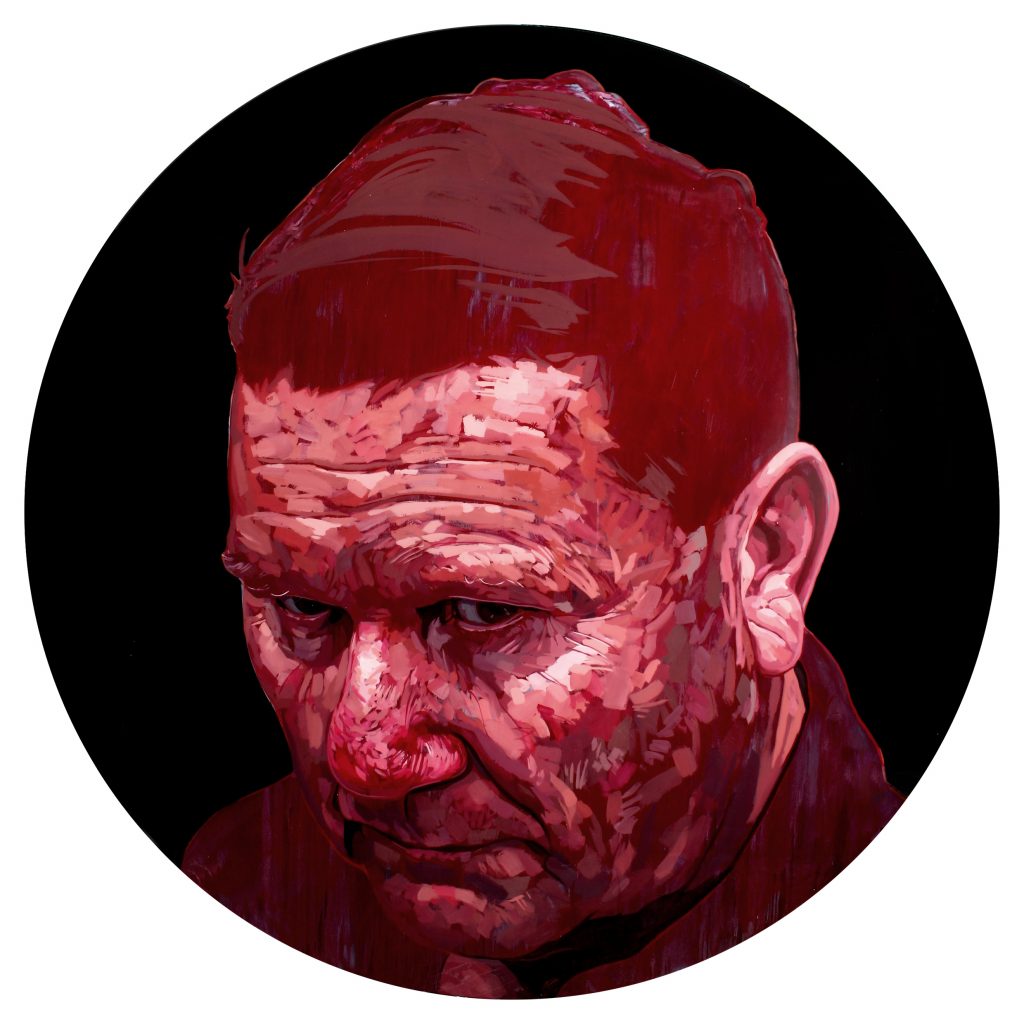
HAPPY: Is it paramount that artists present challenges to societal norms?
ABDUL: No. Maybe. If they want. It depends on what type of artist they are. I think we’re good at it, but it doesn’t mean we have to.
HAPPY: For your work Them and us you acquired a Southern cross tattoo with Islamic modification of a crescent moon and star. How important do you think self-sacrifice is to art in general?
ABDUL: The most honest answer is: it depends. It depends on the work you’re making, why you’re making it and what you’re trying to communicate it. If ‘self-sacrifice’ is important to what you’re trying to do, then it is important to the work. Ill considered self-harm is counter productive.
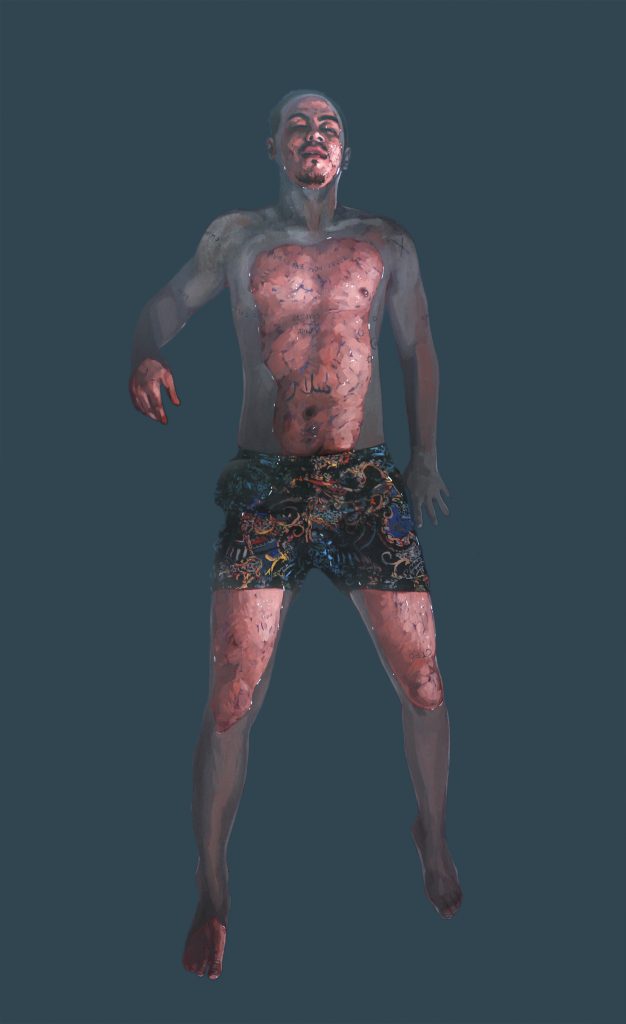
HAPPY: What’s the purpose of including yourself in your own work?
ABDUL: At first it was about being at the front line of my work. I didn’t want to feel like I was exploiting my subjects and thought they shouldn’t shoulder the burden of some of the stuff I was trying to communicate. As my process has developed I am getting better at talking with my models so that we are all on the same page.
HAPPY: What’s your experience with racism in response to your work?
ABDUL: When my works have been shown in public they’ve been vandalised, threats have been made to the galleries – all sorts of stuff. At a gym I used to work at I had a photo up of a painting I did of my mum, and this lady saw it and tried to insist I take it down because my mum had a hijab on and she found it offensive. The member for the Christian Democratic party in Sydney said I was trying to convert young Australians and I worshipped a moon god. People are shit.
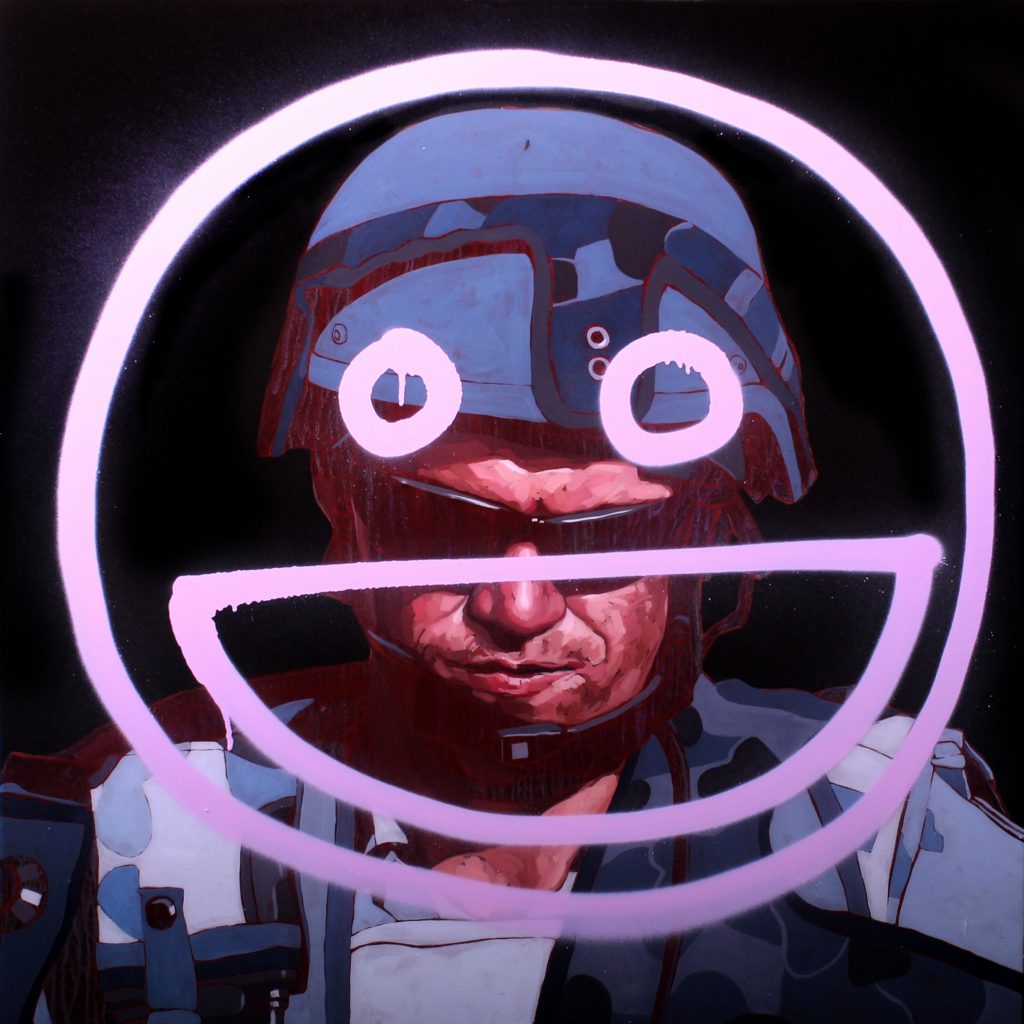
HAPPY: Do you distinguish between the reception of your work amongst different cultural, ideological or religious backgrounds?
ABDUL: It’s mixed. Usually it’s a good response but not always. Often I’ll come up against conservatism like it exists in every community. I guess my work is for Muslims, but it’s not specifically for Muslims. They are not excluded, but it’s not exclusively for them either. In regards to other cultures and groups: I’ve never taken a poll.
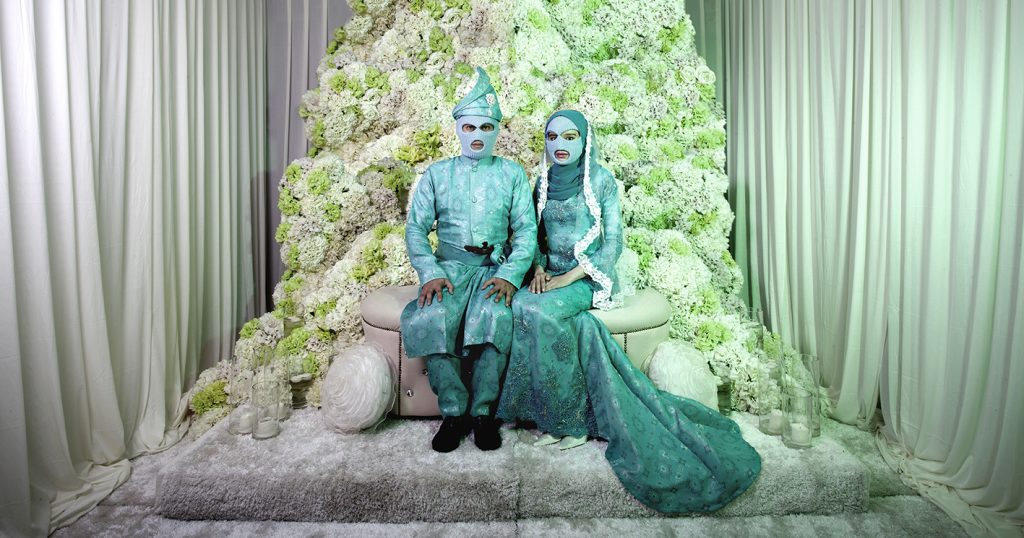
HAPPY: What’s your personal artistic process?
ABDUL: Ideas come from everywhere. I try and write them down when I can, or draw a quick picture. Often they’ll sit with me for a long time and I’ll come back to something I first thought of a few years ago. When I’m set on something I start a pretty meticulous design and development process. And then I’ll make it, or have it made.
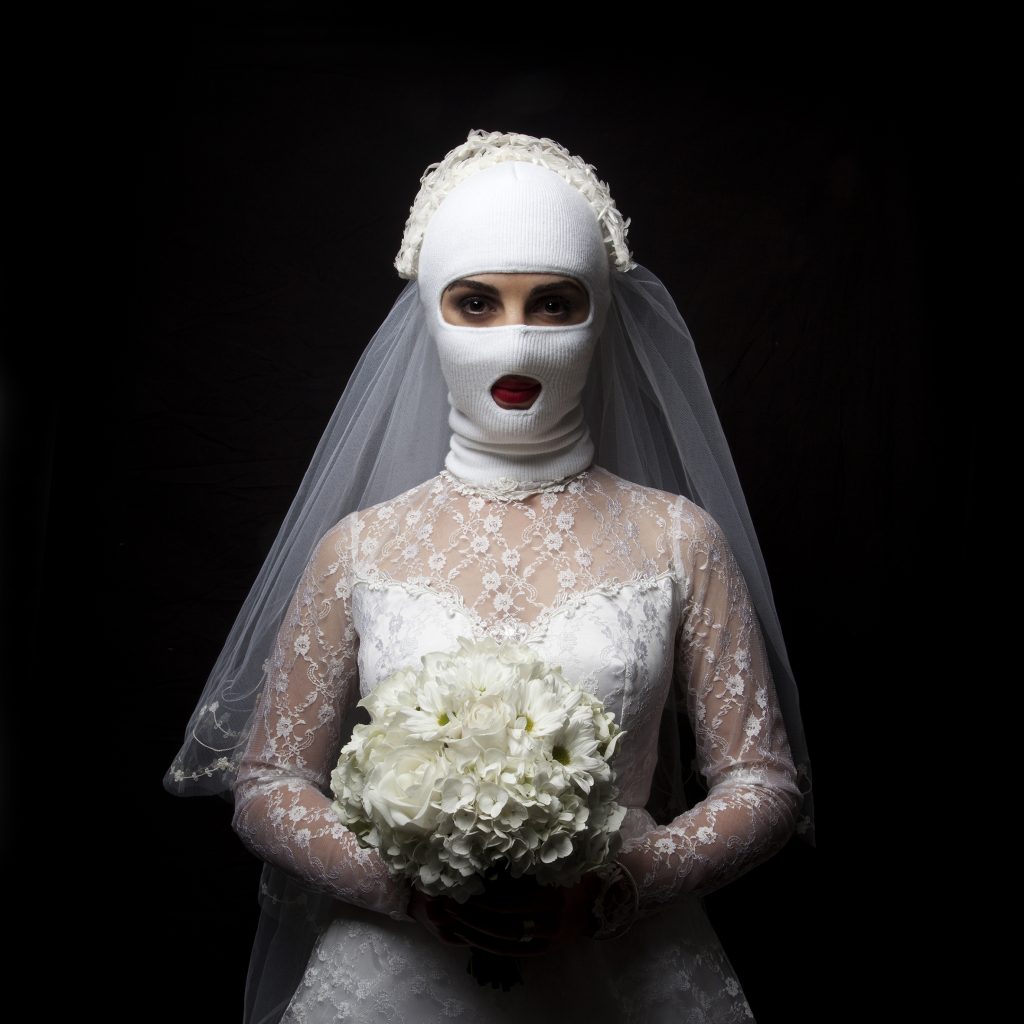
HAPPY: You recently had an exhibition in New York. How did you find your work was received overseas compared to here in Australia?
ABDUL: I deliberately chose works in that show that were less ‘Australia specific’. I think there was a good response. That sort of thing takes time though. My focus is Australia, but I’ll keep showing overseas. I think that what I’m doing is relevant to conversations being had all over the world.
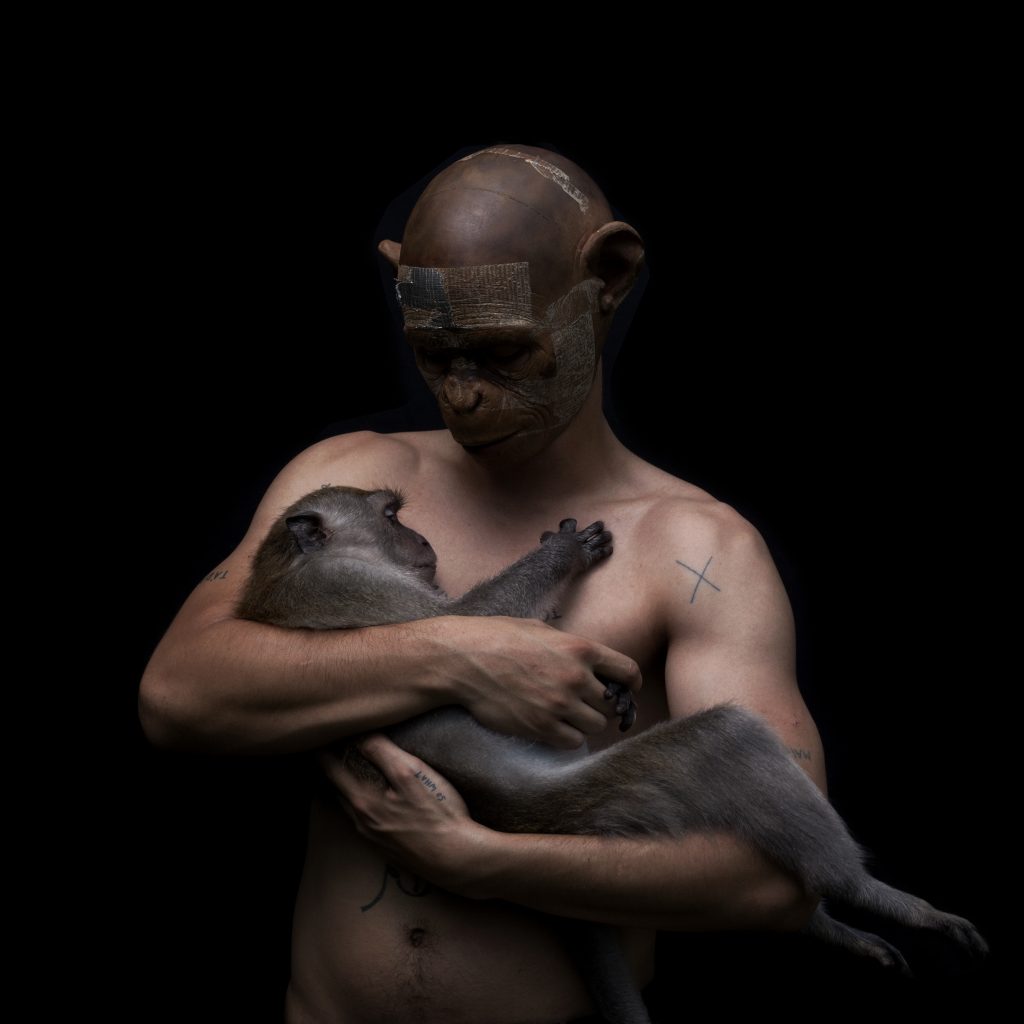
HAPPY: How has your work developed over your career? Has there been any significant events that are reflected in your artwork?
ABDUL: I guess my practice has developed in a few different ways. At first I was pretty tied to painting, but that shifted pretty quickly. I look to events as formative like the Cronulla riots, the re-election of One Nation, the first Reclaim Australia rallies… these will all be reflected in my work in one way or another.
HAPPY: Your art spans through multiple mediums. How do you go about selecting which medium to use for a concept?
ABDUL: I try to privilege the idea over the medium. So I’ll get an idea first and figure out what’s the best way I can communicate it. Sometimes it works the other way, but not often.

HAPPY: Are you currently working on any projects?
ABDUL: I’m currently working on a show with my brother Abdul-Rahman Abdullah and Khaled Sabsabi for PATAKA Art + Museum in New Zealand in August. It will be a culmination of ideas explored in my last three shows: Painting, more painting (ACCA), Burden (Fehily Contemporary) and Jogja calling (4A Centre of Contemporary Asian Art).
